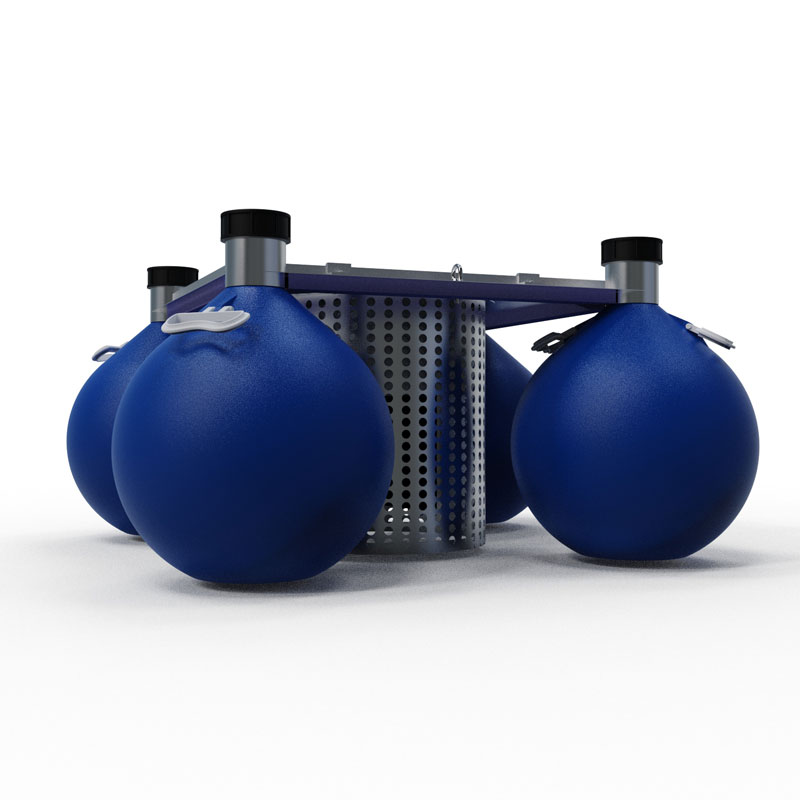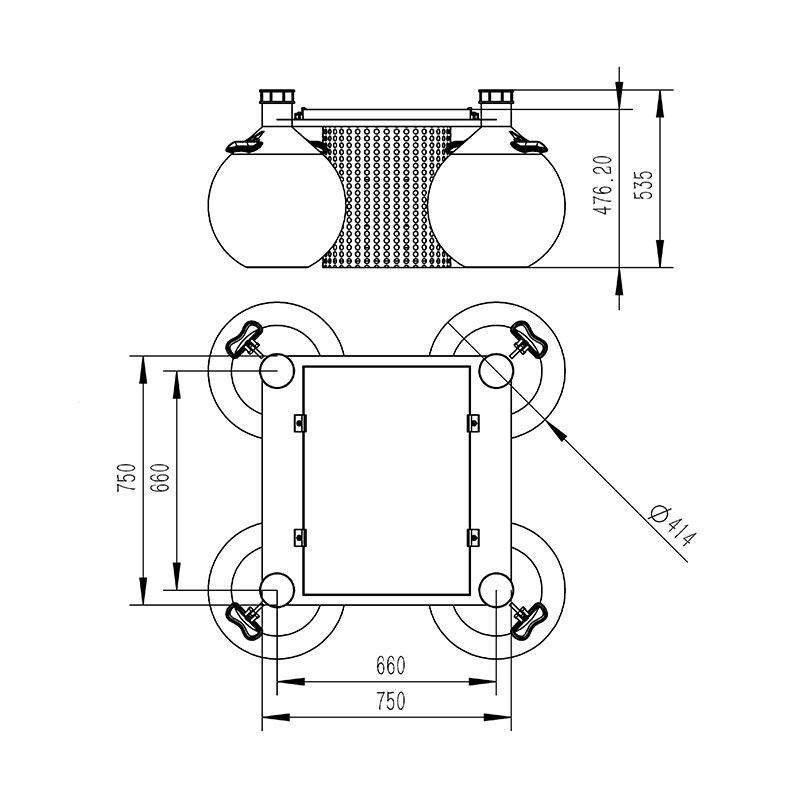Tianyi Sensor IOT Technology Co., Ltd
Sales Manager:Ms. Emily Wang
Cel,Whatsapp,Wechat:+86 15898932201
Email:info@fengtutec.com
Add:No. 155 Optoelectronic Industry Accelerator, Gaoxin District, Weifang, Shandong, China

Sales Manager:Ms. Emily Wang
Cel,Whatsapp,Wechat:+86 15898932201
Email:info@fengtutec.com
Add:No. 155 Optoelectronic Industry Accelerator, Gaoxin District, Weifang, Shandong, China

Model:FT-SFA03
Brand:tianyi
1.Introduction to Water Quality Buoy Functions
Water Quality Buoy is a floating platform that is easy to use, reliable and capable of highly accurate monitoring of multiple water quality parameters.
1.The unattended collection system of the water quality float monitoring station SFA integrates data collection, storage, transmission and management.It is an automatic hydrological measurement and reporting system for industrial and agricultural production, tourism, urban environmental monitoring, geological disasters, flood control, water scheduling, power station and reservoir water situation management, etc.; the powerful upper computer software can remotely observe real-time water and rain information, and has database, reports, download and other functions.Users can also use this complete meteorological software to further process and analyze the recorded data.
2.The SFA03 float consists of six parts: water quality sensor (water temperature, conductivity, PH), data collector, communication system, power supply system, overall support, and water quality monitoring platform.At the same time, it can expand dissolved oxygen, ammonia nitrogen, turbidity, COD, and a number of water quality elements.The data collector has data acquisition, real-time clock, data timing storage, parameter setting and standard 2G/4G (GPRS) communication functions.
2.Water Quality Buoy product features
1.Easy to deploy: All types of probes are highly integrated and easy to install; free cloud platform services are provided, and the system is quickly launched;
2.Easy maintenance: After the equipment is installed, it can work by itself, without manual duty, and the normal operation of the equipment can be ensured through remote monitoring;
3.Easy to expand: All sensor probes use a unified communication protocol, which can quickly connect to the original equipment and quickly expand monitoring parameters;
4.Low power consumption: The device can operate for a long time in a low power consumption state, increasing the convenience of the device;
5.Real-time: The data monitored by the device is transmitted to the cloud platform in real time, improving the timeliness of environmental data feedback.
3.Water Quality Buoy Technical Parameters
1.Main parameters
| Product Name | describe |
| Water Quality Buoy | Online monitoring of multiple parameters can be realized in real time. Battery power monitoring can be realized. It can realize cloud platform data monitoring, data push, Data storage and alarm function; data wireless transmission function. The peak power consumption is 5W; the sensor power consumption is about 0.25W per piece. Dimensions: 750mm*750mm*535mm.Float diameter 414mm Weight: 22kg |
| Collector data acquisition | Reliable operation, anti-interference, and can integrate multiple RS485/MODBUS-RTU slave equipment |
| Collector data output | 1-channel Rs485/JSON protocol output |
| Battery | Lithium battery 12VDC, 20AH (default) |
| Solar panels | 22.1V/50W (default) |
| Power supply capacity | Customized selection; work for more than 5 days during rainy days |
| Position indication (optional) | Warning light; GPS positioning; |
| Monitoring platform | Cloud platform; mobile phone/computer multi-terminal login |
| Protective cover | 304 stainless steel filter cartridge protective cover |
| Floating body | Diameter 414mm, spherical floating body * 4 engineering plastic |
2.The main parameters of optional sensors
| Serial number | name | Measurement range | Measurement principle | Measurement accuracy | Is it standard? | Remark |
| 1 | temperature | 0~50℃ | High-precision digital sensor | ±0.3℃ | ✔ | |
| 2 | pH | 0~14 (ph) | Electrochemistry (salt bridge) | ±0.1PH | ✔ | |
| 3 | ORP | -1500mv~1500mv | Electrochemistry (salt bridge) | ±6mv | ||
| 4 | Conductivity | 0~5000uS/cm | Contact electrode method | ±1.5% | ✔ | |
| 5 | Turbidity | 0~40NTU (low turbidity) | Scattering light method | ±1% | Low turbidity can be customized | |
| 0~1000NTU (medium turbidity) | Scattering light method | ±1% | Customizable | |||
| 0~3000NTU (high turbidity) | Scattering light method | ±1% | Default send | |||
| 6 | Dissolved oxygen | 0~20mg/L | Fluorescence life method | ±2% | ||
| 7 | Ammonia nitrogen | 0-1000.00mg/L (default) 0-100.00mg/l/ (customizable) | Ion Selection Electrode Method | 10% of reading, ±0.5℃ | ||
| 8 | cod | 0~500mg/ L | UV254 absorption method | ±5% | Default turbidity, cod | |
| Turbidity | 0~400NTU | Scattering light method | ±1% | |||
| 9 | Suspension | 0~2000mg/L | Scattering light method | ±5% (depending on sludge homogeneity) | ||
| 10 | Chlorophyll | 0~400ug/L | Fluorescence method | R2>0.999 |
4.Water Quality Buoy product size diagram

5.Water Quality Buoy equipment installation requirements
1.Stay away from high-power radio transmitters
2.Stay away from high-voltage transmission lines and microwave radio transmission channels
3.Try to be close to the data transmission network
4.Stay away from strong electromagnetic interference
6.Introduction to Water Quality Buoy Cloud Platform
1.CS architecture software platform, supports direct observation of mobile phone and PC browsers.There is no need to install additional software.
2.Support multiple accounts and multiple devices to log in
3.Support real-time data display and historical data display dashboard
4.Cloud server.Cloud data storage, stable and reliable, easy to scale, and load balancing.
5.Support SMS alarm and threshold settings
6.Support map display and viewing device information.
7.Support data curve analysis
8.Support data export table form
9.Supports data forwarding, HJ-212 protocol, TCP forwarding, http protocol, etc.
10.Support data post-processing function
11.Support external running of javascript scripts
Entering the high - standard farmland demonstration area, 25 newly installed Solar insecticidal lamps are neatly arranged in the fields. These devices consist of silver lamp poles, black solar panels, and green lamp housings. They absorb solar energy and store electricity during the day, and at nigh...
Weighing Rain Gauge is based on weighing principle technology, utilizing high-precision sensors to real-time measure the pressure change of precipitation on the receiving container, thereby accurately calculating precipitation intensity. It can measure both liquid and solid precipitation, as well as mixed solid-liquid precipitation, suitable for long-term automatic monitoring needs in hydrology, meteorology, forestry, and other departments....
Anemometer for drones, the ultrasonic anemometer is a high - precision meteorological monitoring device designed based on the principle of ultrasonic resonance. It is specifically developed for the low - altitude environmental monitoring needs of small drones and unmanned platforms. Its core technol...
Microwaves refer to electromagnetic waves with frequencies ranging from 300MHz to 300GHz and wavelengths from 1 millimeter to 1 meter. Due to their high frequency and short wavelength, they have strong directivity and penetrating power, enabling stable propagation under different meteorological cond...